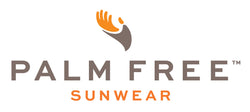UV Exposure in Outdoor Sports

Throughout the years, sports have evolved into something more than simple play. Whether it’s for competition, fitness, or fun, many of us have a sport that we identify with. When picking your team members, however, it’s important to recognize a key player in the game; the sun’s radiation.
It is true that the sun’s rays can help us convert pre-vitamin D into vitamin D. Yet, with too much sun exposure, the negative effects outweigh the positives. Scientists refer to the amount of exposure to sunlight in terms of dosages. Just like medicine, the sun’s rays can be helpful in small enough doses, but harmful when taken in excess. This must be considered in all outdoor activities, but especially sports.
The Standard Erythema Dose (SED), is the minimum exposure to UV radiation that can cause erythema (skin redness), which can last up to 24 hours. Many sports receive more than this dosage per hour. In a recent study, tennis, golf, and sailing have shown to result in high UV exposure ranging from 3.5 to 5.4 times the SED per hour. For these sports, the exposure was found primarily on the shoulders and arms. A sample size of three triathletes showed a mean SED of 20.8 times the normal dose. The highest exposure to UV radiation, however, is found in mountain bikers, hikers, and guides. A study of 23 different guides from around the world showed an average SED of 29.8 times the normal dose. These people are at the highest risk for skin cancers and should always wear sunscreen and protective clothing.
Another factor of outdoor exercise is our immune system. It is well documented that regular low impact exercise is beneficial to one’s health. Nevertheless, overtraining and high intensity exercise, have been shown to suppress the immune system. Also, high doses of UV radiation suppress the immune system in the skin. This combination of high intensity activities with consistent excessive sun exposure can be detrimental to one’s immune system. A suppressed immune system cannot work to destroy proliferating cancer cells in the body and the skin. This increases one’s risk of skin cancers such as Basal Cell Carcinomas, Squamous Cell Carcinomas, and Melanomas, especially outdoor athletes compared to non-outdoor athletes.

Whether you are training for a marathon, or playing a game of pickup basketball with some friends, always be aware of the competition. More importantly, beware of the less obvious competition; between your skin and the sun. When it comes to this opponent, sun protective clothing and sunscreens can help you shield you from this potentially dangerous opponent.
Photos:
http://globaltennisadviser.com/wp-content/uploads/2014/01/tennis-for-all.jpg
http://www.freewallpapersbase.com/sports/wallpapers1/sports-wallpaper200962819332640778016.jpg




